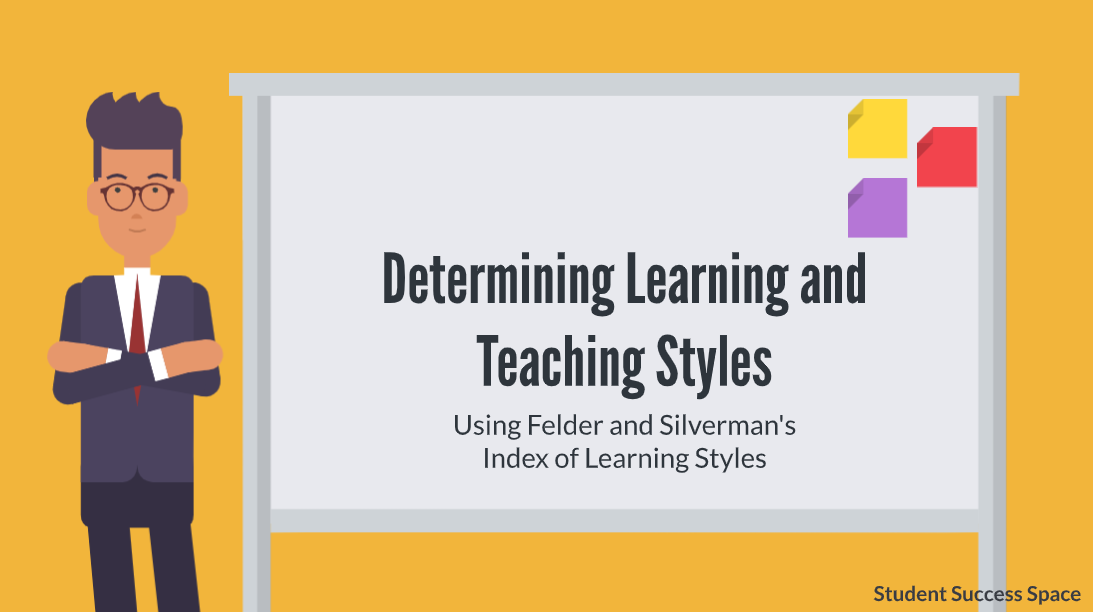Although Felder and Silverman first proposed their learning styles in 1988 in a paper entitled Learning and Teaching Styles in Education, the measure or assessment was not readily available until 1996.
Determining the Learning Style
In the original work, Felder and Silverman proposed five questions that could aid in determining the preferred learning style.

- “What type of information does the student preferentially perceive: sensory (external)—sights, sounds, physical sensations, or intuitive (internal)—possibilities, insights, hunches?
- Through which sensory channel is external information most effectively perceived: visual—pictures, diagrams, graphs, demonstrations, or auditory— words, sounds? (Other sensory channels—touch, taste, and smell—are relatively unimportant in most educational environments and will not be considered here.)
- With which organization of information is the student most comfortable: inductive—facts and observations are given, underlying principles are inferred, or deductive—principles are given, consequences and applications are deduced?
- How does the student prefer to process information: actively— through engagement in physical activity or discussion, or reflectively— through introspection?
- How does the student progress toward understanding: sequentially—in continual steps, or globally—in large jumps, holistically?” (Felder & Silverman, 1988, p.675).
The full 44-question inventory that was later developed can be accessed at:
Online questionnaire: https://www.webtools.ncsu.edu/learningstyles/
Despite the accessibility of the inventory, there seems to be little data to ensure the validity and reliability of this measurement inventory.
Determining the Teaching Style
Additional questions were developed by Felder & Silverman to determine preferred teaching styles. The accessibility to this information was to aid educators in matching their teaching style to the needed learning style.
- “What type of information is emphasized by the instructor: concrete— factual, or abstract—conceptual, theoretical?
- What mode of presentation is stressed: visual—pictures, diagrams, films, demonstrations, or verbal— lectures, readings, discussions?
- How is the presentation organized: inductively—phenomena leading to principles, or deductively— principles leading to phenomena?
- What mode of student participation is facilitated by the presentation: active—students talk, move, reflect, or passive—students watch and listen?
- What type of perspective is provided on the information presented: sequential—step-by-step progression (the trees), or global—context and relevance (the forest)?” (Felder & Silverman, 1988, p.675).
Sources:
Felder, R. & Silverman, L. K. (1988). Learning and Teaching Styles in Engineering Education. Engineering Education, 78(7), 674-681.
Follow us on Instagram: MBTI.Specialist or StudentSuccessSpace
Follow us on YouTube: StudentSuccessSpace
Want to learn more about this topic?
Learn more on Udemy.com. Search for Tracy Atkinson’s courses.
Want to Read More? Search for Tracy Atkinson’s publications on Amazon.

Comments are closed